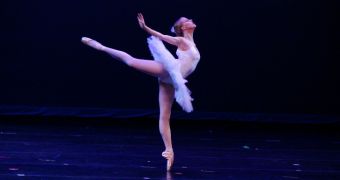One of the main reasons why ballerinas hold such a fascination with ordinary folks is the fact that these dancers seem able to spin as much as they wish to without ever getting dizzy.
According to a new paper in the journal Cerebral Cortex, ballerinas owe this amazing ability of theirs to the fact that their brain is wired quite differently from that of the average Joe and Jane.
Specifically, researchers argue that, according to their investigations, ballerinas somehow train their brain into ignoring signals sent by the inner ear.
Thus, an area in their cerebellum that is in charge of processing sensory input from vestibular organs (i.e. the sensory mechanism in the inner ear that pins down head movement and helps control balance) is smaller than it should be.
Besides, the area in their cerebral cortex that governs perception of dizziness is also reduced.
“It's not useful for a ballet dancer to feel dizzy or off balance. Their brains adapt over years of training to suppress that input,” explains Dr. Barry Seemungal with the Imperial College London, as cited by EurekAlert.
The scientists hope that these findings will help them better understand and treat chronic dizziness.
As Dr. Barry Seemungal puts it, “If we can target that same brain area or monitor it in patients with chronic dizziness, we can begin to understand how to treat them better.”

 14 DAY TRIAL //
14 DAY TRIAL //